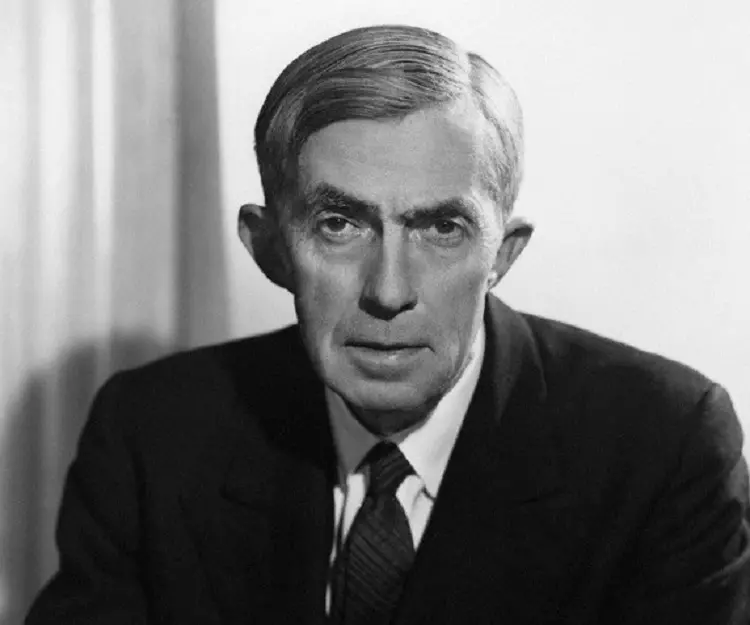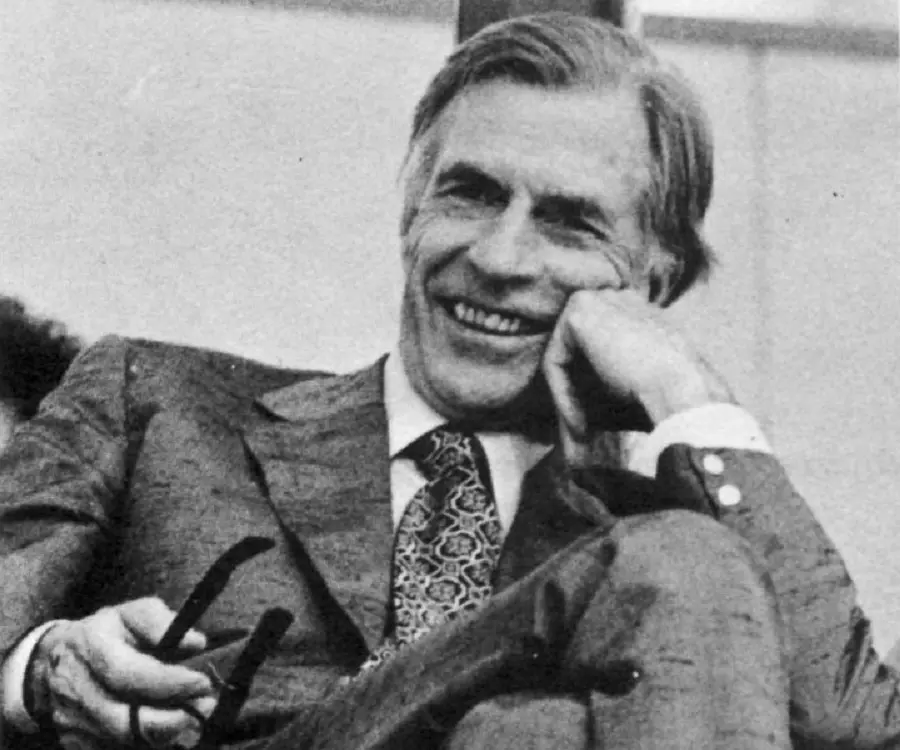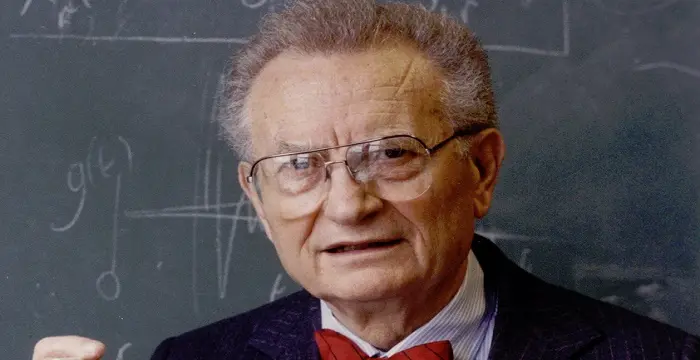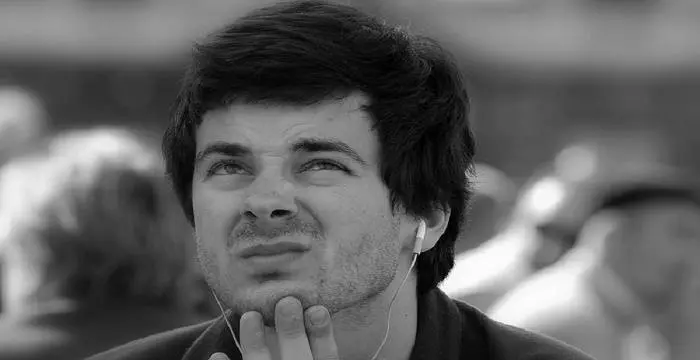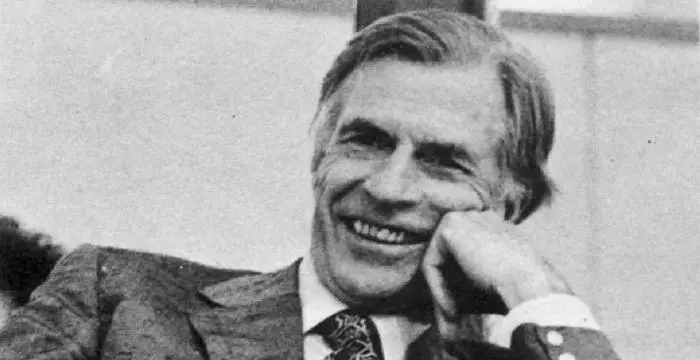
Roy Harrod - Economists, Career and Family
Roy Harrod's Personal Details
Sir Henry Roy Forbes Harrod was an English economist who contributed greatly to the field of macroeconomics
| Information | Detail |
|---|---|
| Birthday | February 13, 1900 |
| Died on | March 8, 1978 |
| Nationality | British |
| Famous | Intellectuals & Academics, Economists |
| Birth Place | Norfolk, United Kingdom |
| Gender | Male |
| Sun Sign | Aquarius |
| Born in | Norfolk, United Kingdom |
| Famous as | Economist |
| Died at Age | 78 |
// Famous Intellectuals & Academics
Bertil Gotthard Ohlin
Bertil Gotthard Ohlin was a famous Swedish economist. This biography profiles his childhood, family life & achievements.
Emily Greene Balch
Emily Greene Balch was an American economist, sociologist and pacifist who won the 1946 Nobel Peace Prize. This biography of Emily Greene Balch provides detailed information about her childhood, life, achievements, works & timeline.
Martin Buber
One of the greatest philosophers to have ever walked on earth, Martin Buber contributions to philosophy is a long-standing one. Explore all about his profile, childhood, life and timeline here.
Roy Harrod's photo
Who is Roy Harrod?
Sir Henry Roy Forbes Harrod was an English economist who contributed greatly to the field of macroeconomics. He built on the Keynes’s theory of income determination and developed the Harrod-Domar model. Roy Harrod was a bright student and received scholarships all through his student years. Initially, he wanted to work on philosophy, but later chose economics. While studying at the University of Cambridge he came under the influence of John Maynard Keynes and the two economists stuck up a friendship that lasted till the older man’s death. In fact, Harrod was one of the few youngsters from whom Keynes sought comments while he was writing his well-known book ‘General Theory’. In the post-war era, Harrod took it upon himself to propagate Keynesianism in both in economic and political circles. However, his own contribution was equally significant. He published numerous papers, most of which were related to economic growth. He also conducted research on currency and inflation. It is believed, he would have won a Nobel Prize had he lived longer. However, the British government honored him with a knighthood.
// Famous Economists
Bertil Gotthard Ohlin
Bertil Gotthard Ohlin was a famous Swedish economist. This biography profiles his childhood, family life & achievements.
Emily Greene Balch
Emily Greene Balch was an American economist, sociologist and pacifist who won the 1946 Nobel Peace Prize. This biography of Emily Greene Balch provides detailed information about her childhood, life, achievements, works & timeline.
Paul Samuelson
Nobel laureate Paul Anthony Samuelson is referred to as the ‘Father of Modern Economics’. This biography profiles his childhood, life, career, achievements and interesting facts about him.
Childhood & Early Life
Roy Harrod was born on 13 February 1900, in London. His father, Henrich Dawes Harrod, was a businessman, who had invested a lot of money in a copper mine and lost most of it. He was also an author and had written two historical monographs. His mother, Frances (nee Forbes-Robertson) Harrod, was also a writer.
Harrod had always been a bright student. In 1911, when he was eleven years old, he won a scholarship and entered St. Paul’s School on it. Later he was shifted to Westminster School.
After passing out from school, he received another scholarship and enrolled at the New College in Oxford with classic literature, ancient history and philosophy as his major. However, his college education had to be interrupted for a brief period when in 1918 he was drafted in the army.
During the First World War, he served in the artillery division of the British Army. On being discharged from the military at the end of the World War I in the same year, he went back to the New College to finish his courses
Subsequently, in 1919, he majored in classic literature, ancient history and philosophy, from Oxford. For his graduation work he took up academic philosophy; but when one of the lecturers vehemently criticized his paper he turned to economics, which was at that time a very unusual subject.
Later, Harrod received a teaching post in economics at the University of Oxford. However, to prepare for that, he was advised to spend two semesters studying the subject at some reputed university in the Continent. Instead, he chose University of Cambridge.
Accordingly in 1922, he joined the King’s College at the University of Cambridge and began to study economics under John Maynard Keynes. His time at Cambridge and close association with Keynes had a profound effect on his thoughts. Even after he went back to Oxford, he remained in touch with Keynes.
Career
In 1923, Roy Harrod began his career with a teaching post at the Christ Church College at the University of Oxford. Simultaneously, he also received research fellowship and with that he began to work on marginal revenue curve.
In 1929, he was first to derive the marginal revenue curve in his debut work, ‘Notes on Supply’. Unfortunately, the paper was published much later in June 1930 in The Economic Journal, Vol. 40, No. 158. This delay in the publication denied him the recognition due to him.
Subsequently, he began to work on the long-run envelope of short-run average cost curves and laid out the analytical foundations for the theory of imperfect competition. The paper was published in 1931, but this time too he was little late and consequently, his work went unrecognized.
Nonetheless, he kept on publishing papers. ‘International Economics’, published in 1933 was another of his important works. However, it was his ‘Doctrines of Imperfect Competition’, published in 1934, which created a stir among the academicians and made him famous.
In 1936, he published his fourth important paper ‘The Trade Cycle’. In it, he laid down some of the important points of a new theory on effective demand.
Although neoclassic economists had earlier tried to define the conditions suitable for development of the total output of an economy they failed to deal with long-term effects of sudden changes in specific economic variables. Harrod not only dealt with that, but also showed what would happen if savings were permanently high.
His next significant work of this decade was the ‘An Essay in Dynamic Theory’ (1939). In it, he established that there are three kinds of growth: warranted growth, actual growth and natural rate of growth. It was later known as The Harrod–Domar model.
With the start of the World War II in 1939, his life was interrupted once again. From 1940 to 1942, he worked under Frederick Lindemann (later Lord Cherwell) as personal adviser to Winston Churchill in his ‘S-branch’, which was a statistical section within the Admiralty.
On being relieved from his duty, he resumed his research in economics. Although he had been working on economic growth and imperfect completion since the 1930s this post war period was the most productive period in his life.
In the past two decades, he had laid emphasis on formulating his concept of growth dynamics and in doing so, he had put more stress on determining factors of equilibrium growth rates, rather than the quantities. In 1948, he ultimately published the result of his long research in ‘Towards a Dynamic Economics’.
In 1951, he published ‘The Life of John Maynard Keynes’. While writing this biography, he had full access to his personal papers and was also able to talk to his family. However, he did not include any aspect that might have created controversies in that era.
Much later in 1959, he published another biographical works, titled ‘The Prof: A Personal Memoir of Lord Cherwell’. Concurrently, he continued writing on economic problems; ‘Economic Essays’ (1952), being one of them.
However, from early 1950s, he became more interested in practical policy matters and began writing on this. His books, ‘Policy against Inflation’ (1958), ‘Reforming the World's Money’ (1965), ‘The International Monetary Fund’ (1966), ‘Towards a New Economic Policy’ (1967) etc. show such a clear trend.
Apart from teaching and research, Harrod had also carried on administrative responsibilities at the Christ Church College in Oxford. In addition, he was elected a Fellow at Nuffield College from 1938 to 1947 and then from 1954 to 1958.
In 1967, he retired from Christ Church College. Subsequently, he shifted with his family to Halt, Norfolk. There he continued with his work and published a number of papers. ‘Money’ (1969), ‘Sociology, Morals and Mystery’ (1970) and ‘Economic Dynamics’ (1973) are three of the books published during this period.
Major Works
Throughout his life, Roy Harrod published numerous works. Among them, ‘Doctrines of Imperfect Competition’, published in 1934 was his first major work. Among other things, it deals on the effects of the imperfect competition on equilibrium theory.
His 1948 publication, ‘Towards a Dynamic Economics’, is said to be his most important work. The book is the result of his long research. In it, Harrod had launched an entirely new growth theory based on macroeconomic model and had emphasized on the importance of time in a growing economy.
He is also well known for his 1951 publication, ‘The Life of John Maynard Keynes’. The book is his tribute to the great economist. In it, Harrod combined his intimate knowledge of the man and his economics to produce a biography that is valuable both from economic and literary point of view.
Awards & Achievements
Harrod was knighted in 1959.
Personal Life & Legacy
In 1938, Roy Harrod married Wilhelmine Cresswell, the step-daughter of General Sir Peter Strickland. Lovingly called Billa, she began campaigning for the preservation of historic churches in Norfolk once the family settled there. She was also the founder member of the Norfolk Churches Trust.
The couple had two sons. One of them, Dominick Harrod, was the economics correspondent for the BBC.
Roy Harrod died on March 9, 1978, in Halt, Norfolk, where he had settled down after retirement. He was survived by his wife and two sons.
The Harrod–Domar model, an early post-Keynesian model of economic growth, has been named after both Harrod and Evsey Domar. The two economists had worked on it separately, but came to the same conclusion that there are three kinds of growth and it is not essential for the economy to have balanced growth.
Trivia
Assar Lindbeck, who chaired the Nobel Prize Committee, later wrote that Harrod would have received the Nobel Prize had he lived longer. At that time, there was a huge backlog of prospective award winning economists. Unfortunately, Harrod died before his turn came.
// Famous Aquarius Celebrities peoples
Jessii Vee
Check out all that you wanted to know about Jessii Vee, the famous Canadian Vlogger & YouTube Personality; her birthday, her family and personal life, her boyfriends, fun trivia facts and more.
Luara Fonseca
Luara Fonseca, known on the web as “luaraff,” is a musical.ly star. Check out this biography to know about her childhood, family life, achievements and fun facts about her.
Shane Blanchard
Shane Blanchard is an American TV actor. Let’s take a look at his family and personal life including age, birthday, net worth, family life and some fun facts.
Roy Harrod biography timelines
- // 13th Feb 1900Roy Harrod was born on 13 February 1900, in London. His father, Henrich Dawes Harrod, was a businessman, who had invested a lot of money in a copper mine and lost most of it. He was also an author and had written two historical monographs. His mother, Frances (nee Forbes-Robertson) Harrod, was also a writer.
- // 1911Harrod had always been a bright student. In 1911, when he was eleven years old, he won a scholarship and entered St. Paul’s School on it. Later he was shifted to Westminster School.
- // 1918After passing out from school, he received another scholarship and enrolled at the New College in Oxford with classic literature, ancient history and philosophy as his major. However, his college education had to be interrupted for a brief period when in 1918 he was drafted in the army.
- // 1919Subsequently, in 1919, he majored in classic literature, ancient history and philosophy, from Oxford. For his graduation work he took up academic philosophy; but when one of the lecturers vehemently criticized his paper he turned to economics, which was at that time a very unusual subject.
- // 1922Accordingly in 1922, he joined the King’s College at the University of Cambridge and began to study economics under John Maynard Keynes. His time at Cambridge and close association with Keynes had a profound effect on his thoughts. Even after he went back to Oxford, he remained in touch with Keynes.
- // 1923In 1923, Roy Harrod began his career with a teaching post at the Christ Church College at the University of Oxford. Simultaneously, he also received research fellowship and with that he began to work on marginal revenue curve.
- // 1929 To Jun 1930In 1929, he was first to derive the marginal revenue curve in his debut work, ‘Notes on Supply’. Unfortunately, the paper was published much later in June 1930 in The Economic Journal, Vol. 40, No. 158. This delay in the publication denied him the recognition due to him.
- // 1931Subsequently, he began to work on the long-run envelope of short-run average cost curves and laid out the analytical foundations for the theory of imperfect competition. The paper was published in 1931, but this time too he was little late and consequently, his work went unrecognized.
- // 1933 To 1934Nonetheless, he kept on publishing papers. ‘International Economics’, published in 1933 was another of his important works. However, it was his ‘Doctrines of Imperfect Competition’, published in 1934, which created a stir among the academicians and made him famous.
- // 1934Throughout his life, Roy Harrod published numerous works. Among them, ‘Doctrines of Imperfect Competition’, published in 1934 was his first major work. Among other things, it deals on the effects of the imperfect competition on equilibrium theory.
- // 1936In 1936, he published his fourth important paper ‘The Trade Cycle’. In it, he laid down some of the important points of a new theory on effective demand.
- // 1938In 1938, Roy Harrod married Wilhelmine Cresswell, the step-daughter of General Sir Peter Strickland. Lovingly called Billa, she began campaigning for the preservation of historic churches in Norfolk once the family settled there. She was also the founder member of the Norfolk Churches Trust.
- // 1939His next significant work of this decade was the ‘An Essay in Dynamic Theory’ (1939). In it, he established that there are three kinds of growth: warranted growth, actual growth and natural rate of growth. It was later known as The Harrod–Domar model.
- // 1948In the past two decades, he had laid emphasis on formulating his concept of growth dynamics and in doing so, he had put more stress on determining factors of equilibrium growth rates, rather than the quantities. In 1948, he ultimately published the result of his long research in ‘Towards a Dynamic Economics’.
- // 1948His 1948 publication, ‘Towards a Dynamic Economics’, is said to be his most important work. The book is the result of his long research. In it, Harrod had launched an entirely new growth theory based on macroeconomic model and had emphasized on the importance of time in a growing economy.
- // 1951In 1951, he published ‘The Life of John Maynard Keynes’. While writing this biography, he had full access to his personal papers and was also able to talk to his family. However, he did not include any aspect that might have created controversies in that era.
- // 1951He is also well known for his 1951 publication, ‘The Life of John Maynard Keynes’. The book is his tribute to the great economist. In it, Harrod combined his intimate knowledge of the man and his economics to produce a biography that is valuable both from economic and literary point of view.
- // 1952 To 1959Much later in 1959, he published another biographical works, titled ‘The Prof: A Personal Memoir of Lord Cherwell’. Concurrently, he continued writing on economic problems; ‘Economic Essays’ (1952), being one of them.
- // 1959Harrod was knighted in 1959.
- // 9th Mar 1978Roy Harrod died on March 9, 1978, in Halt, Norfolk, where he had settled down after retirement. He was survived by his wife and two sons.
// Famous British peoples
Wentworth Miller
Wentworth Miller is an American actor and screenwriter who achieved recognition for his role in the TV series ‘Prison Break’.
Sophie Reade
Sophie Victoria Reade is a British model and reality show star. Let’s take a look at her family and personal life, including her age, birthday, boyfriends, and some interesting facts.
Josh Temple
Check out all that you wanted to know about Josh Temple (Slogoman), the famous British YouTube Personality; his birthday, his family and personal life, his girlfriends, fun trivia facts and more.
Yammy Xox
Check out all that you wanted to know about Yammy Xox, the famous British YouTube Personality; her birthday, her family and personal life, her boyfriends, fun trivia facts and more.
Grian
Grian is an English YouTube gamer and social media influencer. Check out this biography to know about his birthday, childhood, family life, achievements and fun facts about him.
Benjamin Atkinson
Benjamin Atkinson is the son of the world-renowned British actor and comedian, Rowan Atkinson. Check out this biography to know about his childhood, family, personal life, including his age, birthday, etc.
Roy Harrod's FAQ
What is Roy Harrod birthday?
Roy Harrod was born at 1900-02-13
When was Roy Harrod died?
Roy Harrod was died at 1978-03-08
Which age was Roy Harrod died?
Roy Harrod was died at age 78
Where is Roy Harrod's birth place?
Roy Harrod was born in Norfolk, United Kingdom
What is Roy Harrod nationalities?
Roy Harrod's nationalities is British
What is Roy Harrod's sun sign?
Roy Harrod is Aquarius
How famous is Roy Harrod?
Roy Harrod is famouse as Economist



